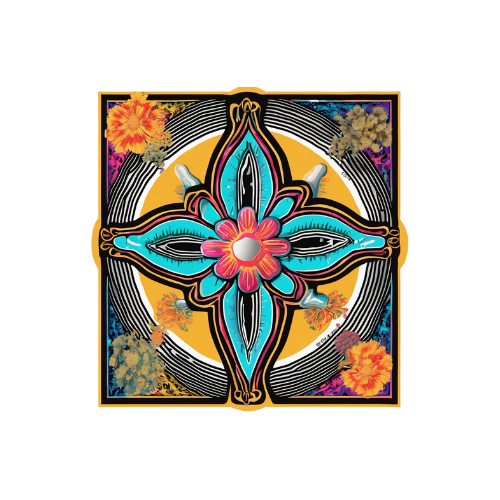Notifications
Blue Oyster
Abstract
Pleurotus ostreatus, commonly referred to as the Blue Oyster Mushroom, is a saprotrophic fungus widely cultivated for its culinary value, vigorous colonization, and resilience across diverse growing conditions. Distinguished by its cool-toned blue-grey hues during early development and its dense, overlapping clusters, this strain is one of the most recognizable and popular members of the Pleurotus genus. Blue Oyster demonstrates robust performance on a range of lignocellulosic substrates and is particularly valued for its adaptability to cooler fruiting temperatures. This entry reviews its morphological traits, spore characteristics, growth behavior, and environmental requirements with emphasis on substrate compatibility and optimal cultivation parameters.
1. Introduction
The Blue Oyster Mushroom is a highly adaptable cultivar of Pleurotus ostreatus, naturally occurring on decaying hardwoods and widely domesticated for indoor and outdoor cultivation. It is renowned for its cold-weather fruiting potential, often performing optimally at lower temperatures where other oyster varieties falter. With its striking steel-blue to greyish hues in early stages and its signature fan-shaped caps, Blue Oyster remains a staple species in both commercial and small-scale mushroom production.
2. Gill Formation
Gills are densely spaced, deeply decurrent, and transition from pale grey to a darker slate or lilac-grey as spores mature. The hymenium is highly productive, yielding heavy spore loads that contribute to the mushroom’s reproductive success in natural and artificial environments. Spore release often results in a pale lilac-grey deposit on nearby surfaces.
3. Microscopy and Spore Morphology
Spores are cylindrical to subcylindrical, smooth-walled, and hyaline under transmitted light, measuring approximately 8–12 µm in length. Spore prints are typically pale lilac-grey and copious. Clamp connections are present throughout the hyphal networks. Hyphal structures are monomitic, contributing to the soft, fibrous texture characteristic of oyster mushrooms.
4. Macromorphology
4.1 Cap (Pileus)
Caps range from 40–120 mm in diameter, typically fan- or oyster-shaped with inrolled margins that flatten with age. Young specimens exhibit striking blue-grey tones which fade to pale grey or light brown with maturation and exposure to environmental conditions. The surface texture is smooth, with a subtle sheen in humid environments.
4.2 Stipe (Stem)
Stipes are short, lateral, and often absent in densely clustered growth. When present, they are off-center, fibrous, and pale grey to white in color. The attachment is sturdy in young specimens but becomes brittle as fruiting bodies age. Mycelial tufts are commonly observed at the base.
4.3 Performance Characteristics
Blue Oyster demonstrates rapid colonization of substrates, prolific fruiting in cooler climates, and tolerance to a broad range of environmental conditions. It forms dense, overlapping clusters that are highly uniform in controlled environments. This strain is especially well-suited to seasonal outdoor grows and indoor environments with temperature regulation.
5. Nutritional Substrates and Cultivation Conditions
5.1 Primary Substrates
Blue Oyster thrives on a wide variety of lignocellulosic materials, favoring those that retain moisture while allowing airflow.
- Straw (Wheat, Oat, Barley):
- Highly effective and standard in oyster cultivation.
- Requires pasteurization for best results.
- Hardwood Sawdust (Supplemented with Bran):
- Enhances yield and consistency.
- Suitable for indoor block cultivation.
- Cardboard/Paper Products:
- Viable for hobbyist-level cultivation with moderate yields.
- Agricultural Waste (Corncobs, Cotton Stalks, etc.):
- Sustainable and cost-effective for larger-scale operations.
5.2 Bulk Substrates
Performs best on substrates that mimic natural wood-based environments.
- Pasteurized Straw + Gypsum: Reliable, cost-effective, and widely used.
- Hardwood Sawdust Blocks (Supplemented): Ideal for commercial consistency and yield.
- Coir, Bagasse, Agricultural Mixes: Suitable with proper supplementation.
5.3 Additives and Supplements
- Gypsum (CaSO₄): Enhances texture and pH stability.
- Bran or Soy Hulls: Boosts nitrogen and protein content for increased productivity.
- Worm Castings: Occasionally used to diversify the microbial profile.
6. Fruiting Parameters
- Colonization Temperature: 68–77°F (20–25°C)
- Fruiting Temperature: 50–65°F (10–18°C)
- Relative Humidity: 85–95% RH during fruiting
- CO₂ Levels: Frequent fresh air exchange required to avoid elongated stems
- Light: Indirect natural or artificial light on a 12/12 cycle promotes even morphology and pigmentation
7. Summary
Pleurotus ostreatus (Blue Oyster) is a vigorous, cold-tolerant mushroom species prized for its rapid colonization, dense fruiting clusters, and visually striking blue-grey hues during early development. Its adaptability to a wide range of substrates, combined with its preference for cooler fruiting temperatures, makes it an ideal candidate for both commercial and home cultivation. Proper management of humidity, fresh air exchange, and hydration is essential to achieving full, dense clusters with optimal coloration and texture.
